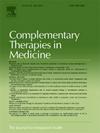Is acupuncture a viable therapeutic strategy for degenerative eye diseases? a systematic review and meta-analysis
IF 3.5
3区 医学
Q1 INTEGRATIVE & COMPLEMENTARY MEDICINE
引用次数: 0
Abstract
Introduction
Degenerative ocular diseases—glaucoma, age-related macular degeneration (AMD), optic atrophy, and retinitis pigmentosa (RP)—are major causes of irreversible vision loss. Acupuncture, a traditional Chinese therapy, has shown promise in improving visual function through neuroprotective and vascular mechanisms.
Methodology
A systematic review and meta-analysis were conducted using data from PubMed, Embase, Scopus, Web of Science, Google Scholar, and Cochrane Library. Randomized controlled trials (RCTs), cohort studies, and other observational studies examined acupuncture or electroacupuncture for degenerative ocular diseases. Quality was assessed using RoB 2.0 for RCTs and ROBINS-I for non-randomized studies. Meta-analyses and narrative syntheses were performed using RevMan and rbiostistics.
Results
A total of 3362 records were identified, with 21 studies meeting inclusion criteria. Acupuncture shows improvements in visual acuity, ocular blood flow, and intraocular pressure (IOP) across conditions. Meta-analyses showed a significant improvement in total effective rate favoring acupuncture (OR = 3.52; 95 % CI: 2.18–5.68; p < 0.00001), with consistent benefits across RP, AMD, and optic atrophy. However, pooled data revealed no statistically significant improvement in visual acuity (MD = –0.03; p = 0.50) or IOP (MD = –0.86 mmHg; p = 0.11). Randomized controlled trials comparing acupuncture to sham controls also showed non-significant trends. Despite some promising physiological and functional outcomes, results remain mixed, emphasizing the need for larger, well-designed studies.
Conclusion
Acupuncture shows potential benefits in treating degenerative eye diseases, especially in improving clinical response rates. However, its effects on visual acuity and IOP remain inconclusive, warranting further rigorous research.
针灸是退行性眼病的可行治疗策略吗?系统回顾和荟萃分析
退行性眼部疾病——青光眼、老年性黄斑变性(AMD)、视神经萎缩和色素性视网膜炎(RP)——是不可逆视力丧失的主要原因。针灸,一种传统的中国疗法,已经显示出通过神经保护和血管机制改善视觉功能的希望。方法采用PubMed、Embase、Scopus、Web of Science、谷歌Scholar和Cochrane Library的数据进行系统评价和meta分析。随机对照试验(rct)、队列研究和其他观察性研究检验了针灸或电针治疗退行性眼部疾病。随机对照试验采用rob2.0,非随机研究采用ROBINS-I进行质量评价。采用RevMan和生物统计学进行meta分析和叙事综合。结果共纳入3362篇文献,其中21篇符合纳入标准。针刺可以改善视力、眼血流量和眼内压(IOP)。荟萃分析显示,针灸治疗的总有效率显著提高(OR = 3.52; 95 % CI: 2.18-5.68; p <; 0.00001),在RP、AMD和视神经萎缩中均有一致的疗效。然而,汇总数据显示,视力(MD = -0.03; p = 0.50)或眼压(MD = -0.86 mmHg; p = 0.11)没有统计学上的显著改善。比较针灸和假对照的随机对照试验也显示出不显著的趋势。尽管有一些有希望的生理和功能结果,但结果仍然喜忧参半,强调需要更大规模、设计良好的研究。结论针刺治疗退行性眼病有潜在的疗效,尤其是在提高临床疗效方面。然而,它对视力和眼压的影响仍不确定,需要进一步严格的研究。
本文章由计算机程序翻译,如有差异,请以英文原文为准。
求助全文
约1分钟内获得全文
求助全文
来源期刊

Complementary therapies in medicine
医学-全科医学与补充医学
CiteScore
8.60
自引率
2.80%
发文量
101
审稿时长
112 days
期刊介绍:
Complementary Therapies in Medicine is an international, peer-reviewed journal that has considerable appeal to anyone who seeks objective and critical information on complementary therapies or who wishes to deepen their understanding of these approaches. It will be of particular interest to healthcare practitioners including family practitioners, complementary therapists, nurses, and physiotherapists; to academics including social scientists and CAM researchers; to healthcare managers; and to patients. Complementary Therapies in Medicine aims to publish valid, relevant and rigorous research and serious discussion articles with the main purpose of improving healthcare.
 求助内容:
求助内容: 应助结果提醒方式:
应助结果提醒方式:


